February 26, 2023
Withered Heights: Art Movements & Criticism
(Note: Addenda, Nota Bene and Postscript have accumulated below. A cornucopia of afterthought.)
Let's contend with these two thoughts:
1. Art movements no longer exist, and ...
2. art criticism has withered.
Why is this so? Are the two interrelated?
Two events have raised the conjunction of these two thoughts to the level of preoccupation in my mind recently. To purge the thoughts from time to time, I flip open my iPhone notepad and type them in bullet point form, usually during a subway ride. I'm posting this so that I can be free of them... for the time being.
First event: Two Coats of Paint Clubhouse conversation"On Being Not-Nice in the Art World" (January 23, 2023).
Second event: during a panel discussion at Acquavella Gallery NYC about their exhibition LESS: Minimalism in the 1960's, director Michael Findlay asked "Have we come to the end of art movements?".
Parenthetical:
There was an exhibition here in NYC whose curatorial idea was about sculptor's drawing. It was much discussed and therefore a must-see since it promised to show how drawing in the Expanded Field could be sculptural or something like that. Upon seeing the exhibition, my impression was that it was like a drawer of nicknacks dumped out on the floor. It was left to the audience to "draw" their own conclusions, the sense of which I thought was an unfinished curatorial task.
Well, here I am in this blogpost, dumping a drawer of thoughts out on the floor of your attention, dear reader. Every portrait, a self portrait. To mitigate my self critique, and to try not to be a complete hypocrite, I've catalogued the following bullet points with title headings.
That's the least I could do... literally.
First, a summary of the conversation:
Two Coats of Paint Clubhouse: On Being Not-Nice in the Art World:
Symptom of relativism, everyone has their ambiguous criteria for quality.
Money became its own criteria for establishing value.
The digital platforms [Information Age] had impoverished viewing, pixels on small screens are a diminishment of the art experience IRL.
The developments in the 70's saw an explosion of new art forms, and its reception set the stage for the eventual evaporation of criticism. ie: Rosalind Krauss' Expanded Field, Marsha Tucker's Bad Painting. [Therefore a teleology gone in Western Civ] a desire for freedom from criterion, end of objectivity, identity is what matters the most, judgement is gone. Therefore you don't need to know art theory, you need to know what you like.
Economic interest runs interference.
Americans are anti-foundational, Europeans are aristocratic. [1. Does the USA lead the art world? 2. Is democracy the cause of the leveling? 3. Is the West democratic?]
Artists are vulnerable. Nobody wants to be trashed.
Irving Sandler presaged the end of polemics, the end of criticism, "chasm of nothing to believe in anymore... no movements in art anymore, no great passion for principles in art."
Artwork today is so self referential, criticism goes to a formal plane, intellectual criteria is gone. So much art today is didactic, political, identity art.
What is topically appropriate in these different arenas: art writing, art studios, art openings?
Since negative critique hurts, it requires artfulness, needs to be skillful in a good way.
There can be repercussions.
There is a responsibility to understand the artist's POV. Counter example: Judd, who brought his aesthetic to everything.
Art school critique used to be rigorous, but have become therapy, life coaching.
The discussion included the critique of Public Art.
(Saul Ostrow) There was a shift away from Modernism, from criticism to Theory, from viewing from a distance to something more personal.
Critical criticism still exists today. Examples: Saul Ostrow's piece on Katz, Seth Rodney, Kathy Quinlan.
(Alexi Smith) There is an inertia of an egalitarian environment. Art writing (journal-ism) eclipsed art criticism. Where are the candid voices?
No one wants to return to clement Greenberg. [Of course!]
Here are my thoughts in response:
The Unspoken Consensus
Something is wrong, this is acknowledged by everyone, at least tacitly. Yet there is a sense of helplessness before the topic. A touch of powerlessness. A whiff of futility.
Art criticism isn't merely being critical. It's an assessment of art works that encompasses both appealing and unappealing aspects. Disabling the latter function incapacitates an otherwise viable criticism.
The title of the Two Coats Conversations Clubhouse chat "On Being Not-Nice in the Art World" is itself too nice. Revealing. We're still tip-toeing on broken glass.
All ink is good news. To be ignored is the worst critique.
Once criticism is deemed to have lost its vitality, people ignore it.
Art Movements, Defined
An art moment is an articulated dissent against a prevailing consensus. The articulation is another path forward.
Art movements occur as a breakout from previous paradigms. This Late Postmodern / Proto-Post-Postmodern era is too broad and diffuse to push back against, too all encompassing, like punching out of a large plastic bag. Everything, everywhere, all at once.
Art movements rely on the conviction that formal expression and conceptual ideation are interdependent, that each give rise to the other. In an era during and after the personal is the political, expression and ideas fuse and strangely, the productive dynamic between them became null and inert.
Does a movement exist when a group of artists are coherently curated together into an exhibition? No. One Art exhibition statement doth not a movement make. Dialog is folded into the nomination / definition. You need a plurality of artist/thinkers articulating facets of the overall pov.
Ecology of an Art World
If the art world is like an ecosystem, there is a minimum number of necessary inter-function of constituent sub-systems (ie artists, collectors, critics, galleries, curators, museums, etc). Species diversity is a healthy aspect of an ecosystem, species loss is a threat. If the art made is homogenous, if the collectors only speculate, if the critics only provide a signal of status, if galleries lose the emergent spectrum, if the curators don't think for themselves, if the museums...
Counterpoint: Art Movements Yet Exist, and if they don't, who cares?
But art movements do exist. A faint signal perhaps, but they exist. ie: New Casualism (Sharon Butler, Rubenstein...). The candlepower is not that strong. Art movements today are usually few, diffuse or they are artificially institutionally driven: themes of Sex, Identity, Race. Outside of this, there's a spontaneous upwelling of figuration among younger artists, but no one has codified or formulated a shared definition of what this means. We can see the influence of popular illustration, a formalism common to zines, comics and anime but no artist has surpassed the sources of their influences.
New Normal: A world without art movement or criticism. It could very well be that criticism will always survive in one form or the other, in ways that those (*cough*) from older generations are unable to recognize. The presence of the negative critique as we knew it might wane, but what is certain today is that the influence of critique as we had known it, based within legacy flagship publications and other associated press venues has all but disappeared... or at least is no longer a navigational aid.
Who Leads the Conversation?
Artists used to direct the conversation. Debates were spirited. Criteria had a sense of urgency. The manifestoes of art movements established the prime fodder for the art dialog in general. Now, this is no longer the case.
The fifties saw the rise of the extra-disciplinary intellectual observer, gate keeper, arbiter. Greenberg initiated the end of that era by becoming overbearing. Bossy pants. Edging on Stolen Valor, everyone wants a slice of the the glory of creative agency. Greenberg was the beginning of the end. Whatever the cause, this is a problem. Artists either direct the art world system or are directed by the institutional system. It is the tendency of any and all systems to eventually serve itself, abandoning its original mission.
The Struggle Within Culture
Culture isn't static. Culture is turmoil. Society at large is embroiled in culture wars. Hobbes' war of all against all. Late stage French Revolution.
Matriarchal vs patriarchal. The struggle for dominance between the sexes is ruinous, blinding society to the necessary, integrated unity of the masculine and feminine.The patriarchy has given way to a matriarchy and with it, over-protection, hyper-sensitivity, fragility, passive aggression. We can see this in art school critique, it's too wary of stepping on land mines, too therapeutic, not enough challenge, no bars set for achievement. We have forgotten the value of complementarity. The figurative strengths of the father and mother are not mutually exclusive.
The emergence of Human Resources, an emergent property of institutionalization and corporatism. This is the managed mentality, the reduction of people to commodities.
Institutionalization. The art world used to be very, very small. As it grew, so grew the institutional structure. What are the dynamics of institutional capture?
Generational Issues. Fragility in Higher Education. Employers having a harder time finding workers, deferred autonomy (living with parents longer), adolescence taking longer, grievance culture.
Sociological Singularity
We've become a monoculture. A monoculture of belief, thought. Diversity is not allowed. A bubble. Silos. Self referential echo chamber. New thinking and analysis can't happen. All universities are interchangeable.
A sociological singularity is a utopia, is an eschatological death wish. The character of the emergent art population has changed. Boomer parents over corrected in their efforts in child rearing. Despite the warnings of social critics like Nassim Taleb and his concept of the anti-fragile, recent generations have been increasingly brittle and highly sensitized.
A failure of criticism is a symptom of a larger failure in the social fabric. There is a sense of torpor setting in, in all cultural sectors. If there are any exceptions to this rule, it's within new social media where innovation is as short lived as a sugar high. As the character in the movie No Country for Old Men, Anton Chigur said: "If the rule that you followed brought you to this, of what use is the rule?" This, another way to say, the 20th Century has passed and the 21st seems to be stuck in the breach. Two Coats participants identified equality as the culprit, but that suitcase wasn't unpacked. Did the apparent bloom of equality bring about the current state of criticism, leveling criteria to extinction? Is equality a polite reference to Social Justice?
Horizontal World. Everything All Over All at Once. (Great movie, btw) Finding patterns and ranking them is a an attempt at verticality, which had been critiqued and banished for quite some time. Where once emerging art was in a contended space now art is no longer emerging when everything is permitted, art instead is merely present. What is different now from sixty years ago is that artists are no longer driving the conversation perhaps due to the overtake of the authority of critics but also because of the widespread acceptance that nothing is new, that the new is impossible that the new is antiquated. "Making a space for mediocrity "
Homogeneity > blended to obliteration > the dark side of equality > erasure of distinctions
The World is a Silo. Silo > isolation > hypertrophic distinction. The world is one big silo once the personal became the political, the conceptual singularity that swallowed everything up. Social justice identity art. One big silo.
Modernity in Movement, Modernity is Movement
The story of art movements (yes, mine): The Modern and Postmodern were born as one but diverged as they issued forth. Both were responses to the rupture of Classical order due to eruptive technological innovation. The Classicism of Doric, Ionian and Corinthian; of beginning, middle and end could not contain reinforced concrete, gun powder, railways, planes or telecommunications. The former believed that it could reconstitute order, the latter refused to believe in order at all. The former immediately manifest itself and the latter emerged latent. Art movements were the digestion of all this. The former exhausted itself because every crafted canon was ruptured anew and the latter prevailed because Anarchism has nothing to lose. The Postmodern was inseminated by Jarry and Duchamp and brought to fruition by Rauschenberg, Warhol and Sol LeWitt. While the Modern tried to touch G-d via material means, the Postmodern pointed to everyday life via conceptual means. Conceptualism proved that art could be a set of instructions, an algorithm, and this was the moment of apotheosis
Late Stage Modernity. Art World: 1) Modernity had lived past its apotheosis. After Conceptualism > the grand etcetera > artists no longer lead the conversation after the conversation lost coherence. 2) Prices and status fueled the emergence of industrial corporatism. 3) Internationalism and homogenization.
The fruition of Modernity is its' extinguishment, the dissolution of categories results in a short circuiting, the erasure of previously definitional boundaries. Modernity promised progress, progress promised utopia, lines converging on a vanishing point on a horizon that is a mirage. All of this is movement. The upshot: the culmination of the Postmodern resulted in the evaporation of traction in the Real World. Lost in the carnival Hall of Mirrors, the Forest of Signs, the end of movement.
Art = Money?
Thumb on the scale: Art joined the ranks of the class of possessions whose capacity and function is as a storehouse of value. A lump of precious metal retains the value of the work required to produce it. Art also functions as a store of value but it requires the custodianship of collectors and institutions to maintain it. This is why time is frozen once an art work leaves the studio. All this is baked into civilization but went into overdrive in the middle of the 20th century as the art world grew in size together with its appreciative audience. All systems get gamed and bigger systems expand exploitation. The result was that the value of art was displaced from intrinsic to extrinsic as art works became increasingly to be regarded as another fungible form of currency.
Speculation, manipulation, game. The temptation to thumb the scale with biased or neutered criticism, coordination of allied interest, market capture... all this and more, catnip. Perhaps this is yet another element in the constitution of the perfect storm of the general phenomenon that contributed to the evaporation of art movements, or this is the cause. The perspective of time will tell.
The State of Criticism
Shooting up is a free fire zone.
Shooting down while necessary, it's like killing puppies. As ugly as it is, has it become necessary when banality threatens? Has it become necessary in the art world society at large when art school has relaxed critical standards, unleashing a multitude of unaffiliated singular interests?
Negative / constructive criticism does exist in the art world today, as evidenced in the Two Coats discussion with the examples cited: Ostrow, Rodney and Quinlan. Off the top my head, I can add Davis, Smith and Saltz... Joselin. But the question is about the degree of traction that criticism holds in today's art dialog. It's like tires spinning in mud, the topical ground is too superfluid, too multi-varied, too particulate and slippery for the teeth of criticism to dig in.
Addenda:
Martin Herbert has weighed in on the topic in Art Review, Is the Art World Too Nice?:
The first reason for the general indifference to negative art reviews, when they happen - and the infrequency of art critics 'getting dachshunded' - is that art criticism is notoriously unread, even when it's not unreadable. The authority that art critics used to have in determining what's good and bad has long been ceded to the market and, a bit, to curators. Similarly, a lot of art reviews come out after the show has closed, so they're not going to affect footfall, and one suspects that for many galleries the general, non-collecting public is largely an inconvenience. A high-profile slamming of a restaurant, by contrast, can decisively affect trade; a bad theatre review can diminish ticket sales. By the time a persnickety exhibition review comes out, the work is probably sold and the gallery's next show is up.
Emphasis, mine.
Yes, the market -and I would add, the institutionalization and corporatization of the art world- has shanghaied the sorting function of traditional art criticism. But responsibility of the critic as a qualified arbiter has to weigh in here too. Speaking for myself, I respect the critic who is an artist of their own art form, writing. Cranky and mediocre or merely adequate doesn't cut it. Good advice can only come from a peer or a better, those who have had the experience of being there in the trenches of the creative act.
Nota Bene:
I used to teach architecture studio back in the 90's, it was a wonderful experience. Critique is key in that environment, and architectural critiques are vigorous and especially challenging. The professors are architects, they are usually multiple and it wasn't unusual for them to have a go at each other, to disagree. Besides the entertainment value for the student, it was instructive to witness the salty veterans model rationality and manners... or not. Since architecture is a science as well as an art, the former yields a lot of meat to chew on and when this is done well, it gives way to the fine, subtle and often intricate clouds of aesthetic construction that position architecture as the mother of the arts.
One thought stayed with me afterwards throughout the years, it hit one day in the heat of a particular group critique: All portraits are self portraits. I realized that a critic usually seizes on the weaknesses in others that he understands on some level to be his own. A critic in action discloses their innermost world. The window opened to see the world also allows others to see into that home. Humbling, yes. But also an opportunity to try to think outside of your own box. No guarantees.
Postscript:
Think of how large the world of art grew during the past 50 years. There was a time when I could see all the openings in town in an evening. There was a time when my elders could meet most of the movers and shakers in a single bar. For decades, graduate schools have increasingly been pumping out artists all over the world. Combine this with the ,a href="http://www.dennishollingsworth.us/mt/mt-search.cgi?IncludeBlogs=1&search=river+delta">delta stage of art variation and the decreasing influence of the critical function of art world ecology... you get the picture. I hope.
Posted by Dennis at
11:54 PM
|
Comments (0)
February 24, 2023
no small reason
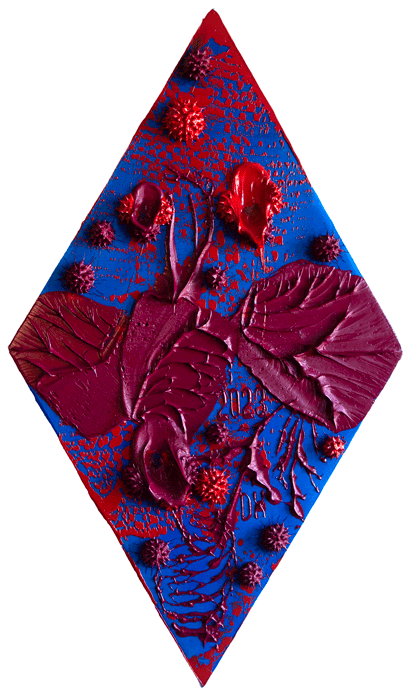
no small reason
2023
#624
32" x 18-1/2"
Oil and Acrylic on Canvas over Wood Panel
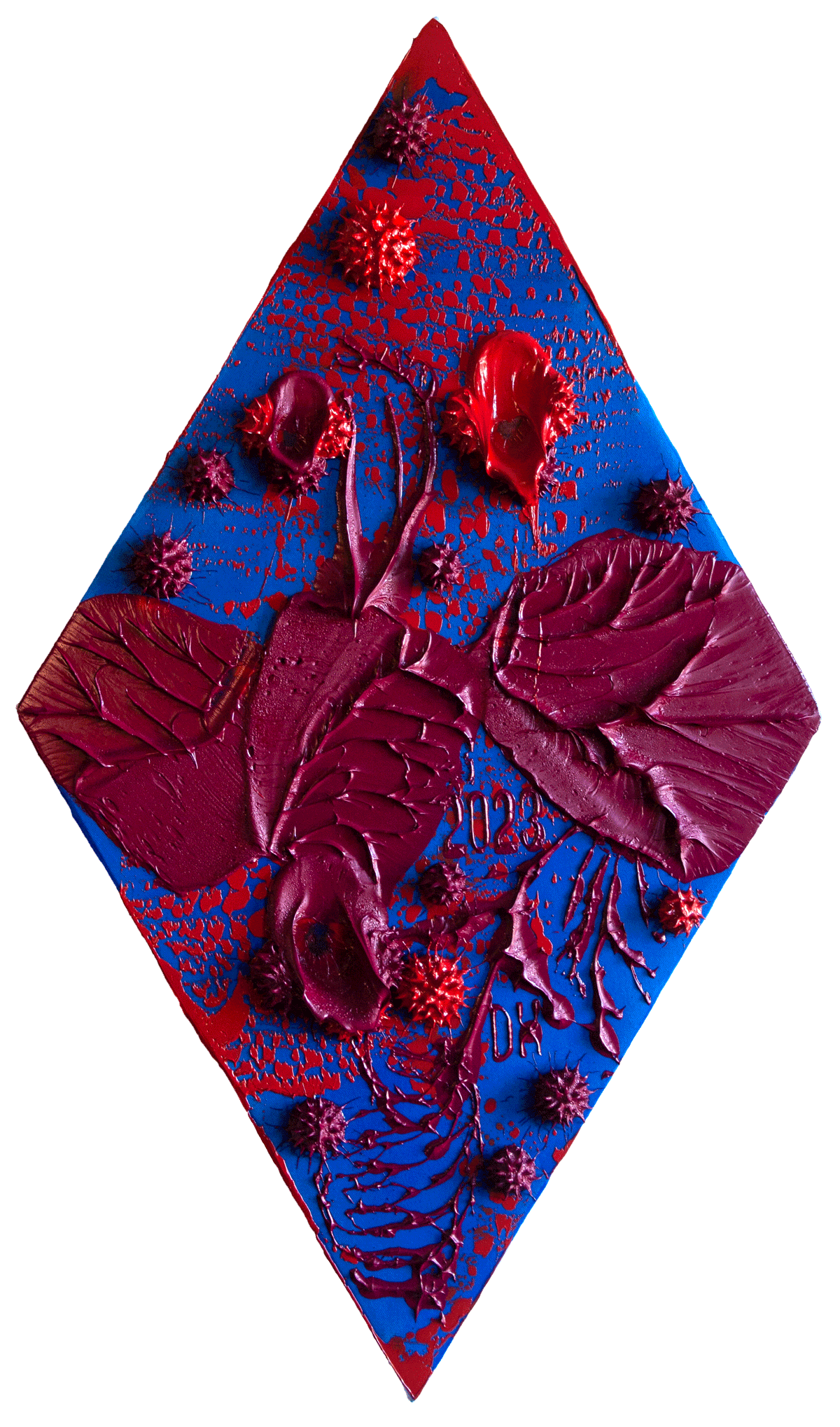
Posted by Dennis at
4:46 PM
|
Comments (0)
Note the cross
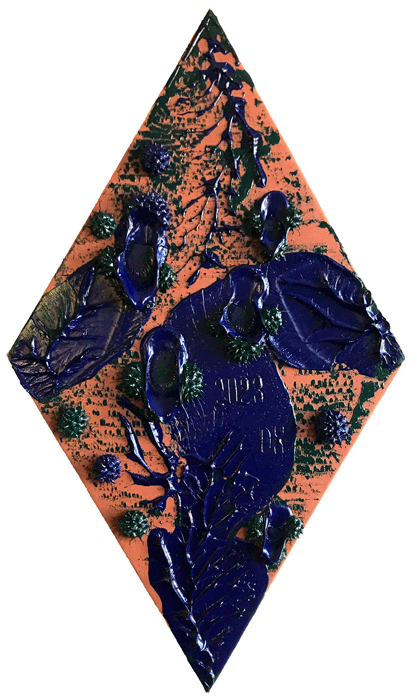
Note the cross"
2023
#623
32" x 18-1/2"
Oil and Acrylic on Canvas over Wood Panel
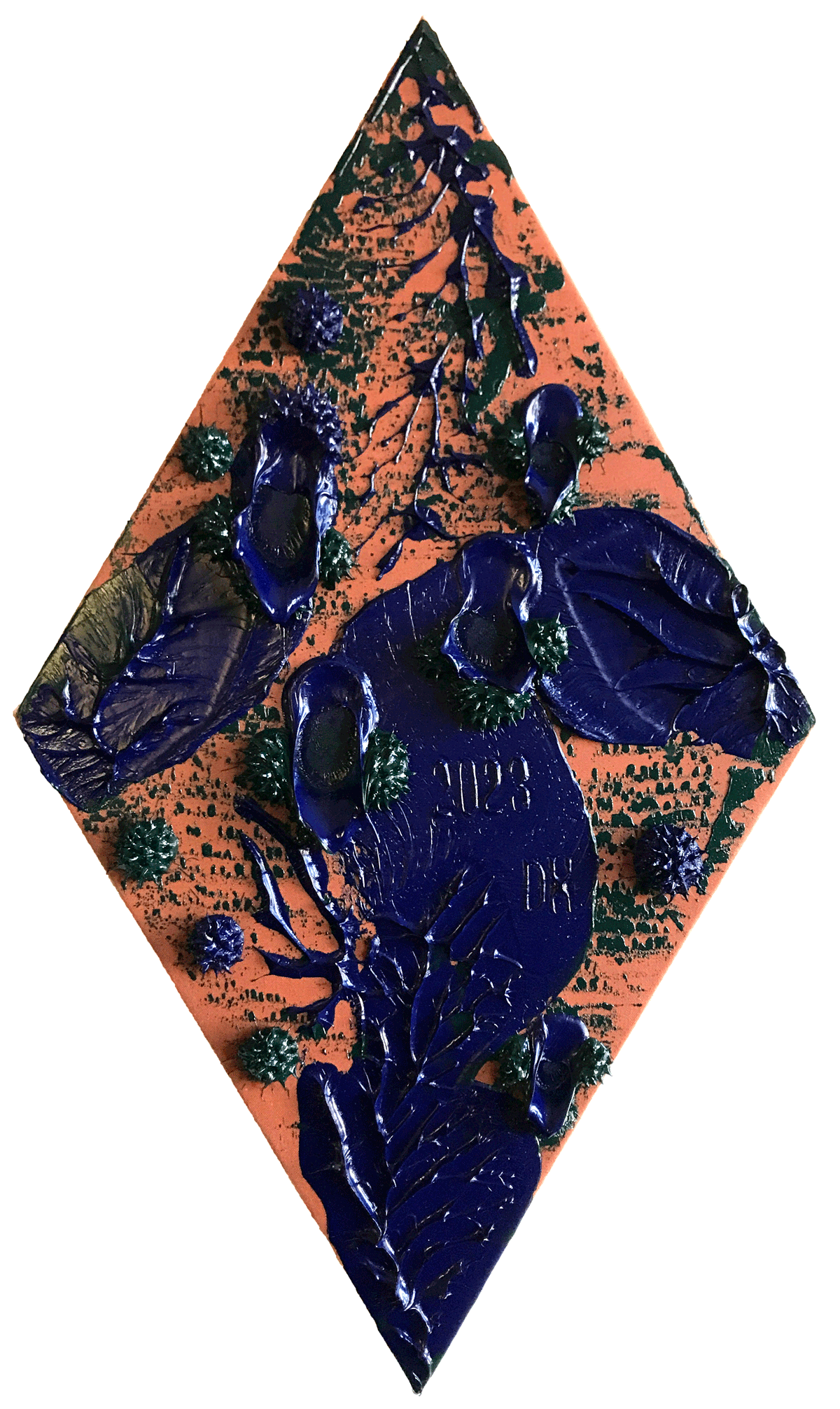
Posted by Dennis at
4:41 PM
|
Comments (0)
simultaneously human and divine
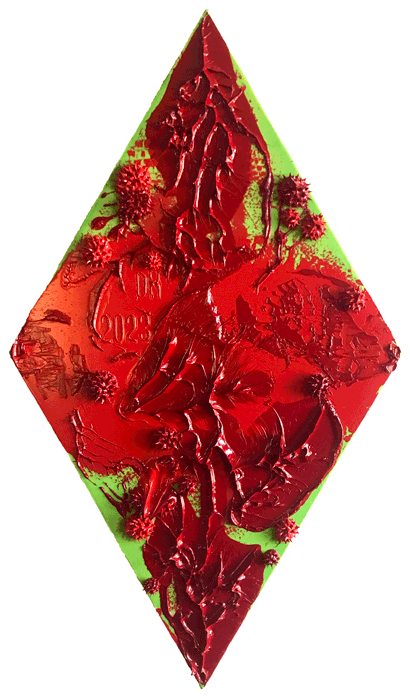
simultaneously human and divine
2023
#622
32" x 18-1/2"
Oil and Acrylic on Canvas over Wood Panel
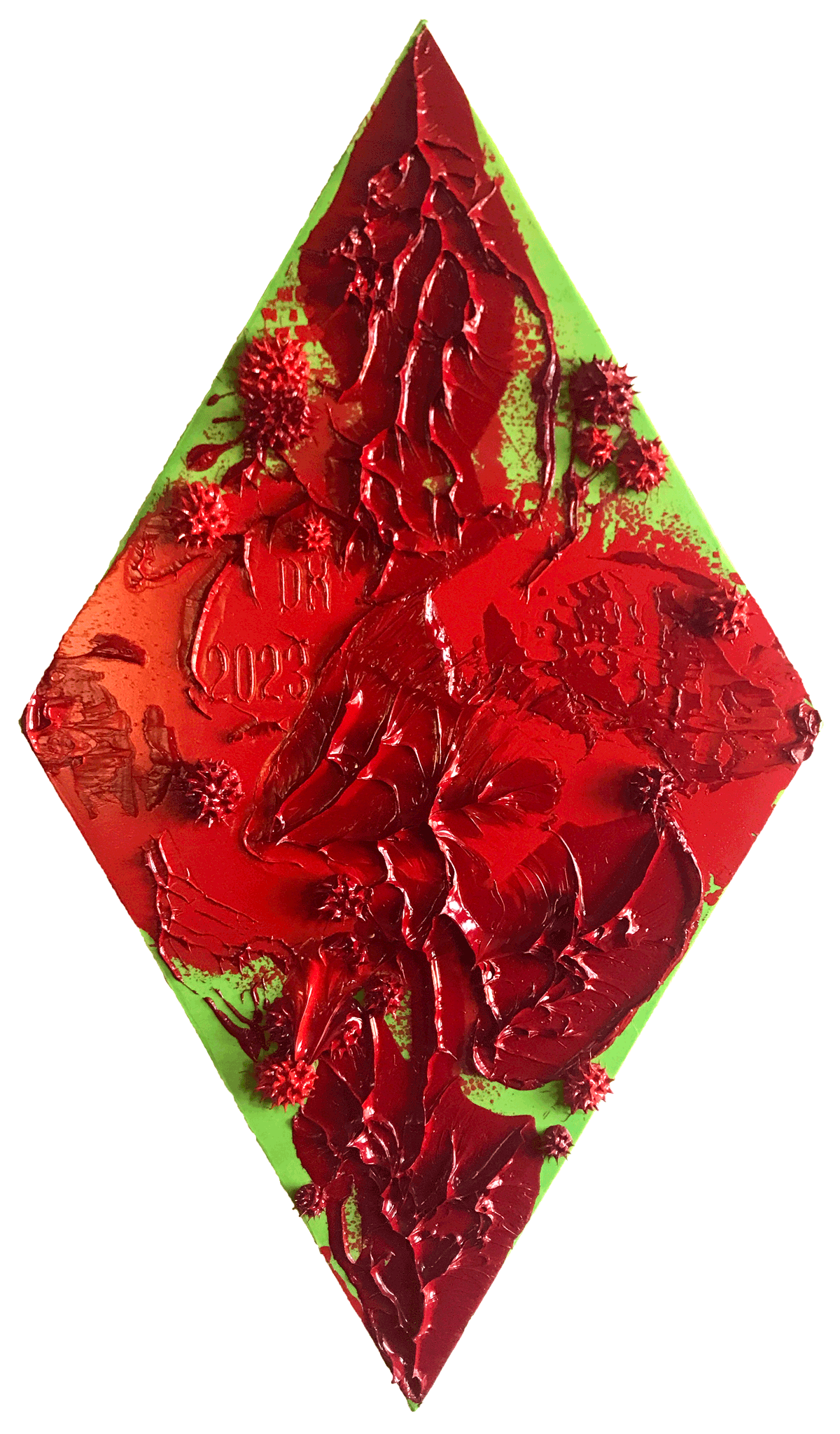
Posted by Dennis at
4:28 PM
|
Comments (0)
Art's Properties by David Joselit
I attended the Live Panel event at Paula Cooper Gallery in Chelsea discussing David Joselit's new book Art's Properties with Susan Buck-Morss, Michelle Kuo and Courtney J. Martin.
I took notes.
(Click to enlarge.)
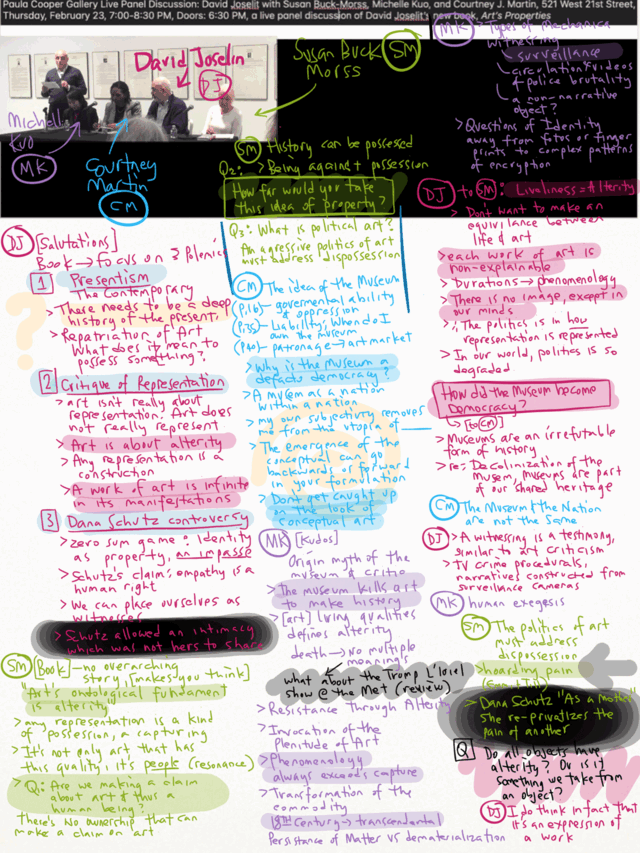
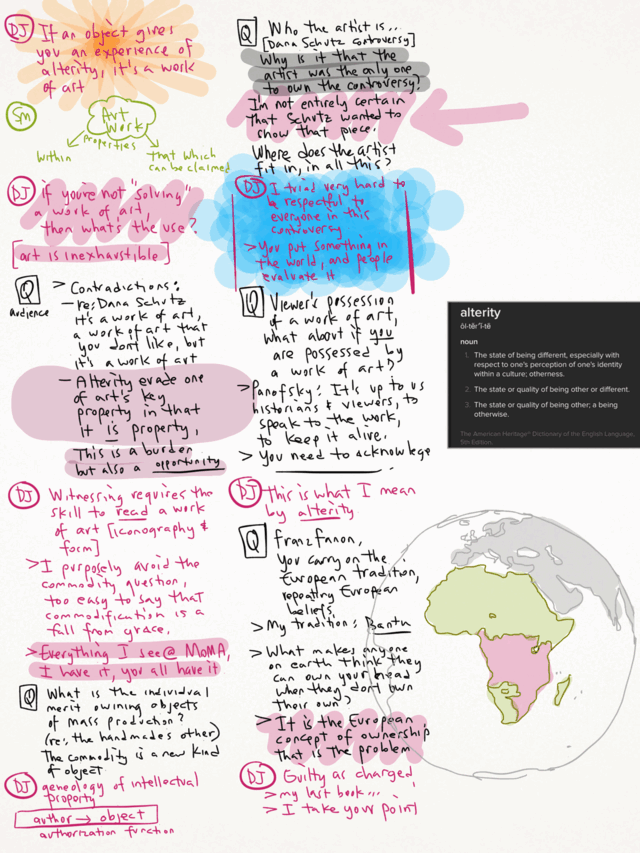
Postscript: I'll have to re-read Joselit's review of the Met's Trompe L'oeil exhibition. I remember that Joselit was disturbed that those curators had the temerity to assert a novel interpretation of Cubism, one different than the one he was comfortable with. Joselit went to low blows to do the job, calling them Trumpists or something in that vein. Seems to conflict with the spirit of anyone sympathetic with alterity.
Like I said, I've got some rereading and studying to do before I set this to concrete...
Posted by Dennis at
12:54 PM
|
Comments (0)
February 20, 2023
like I was shot with a diamond
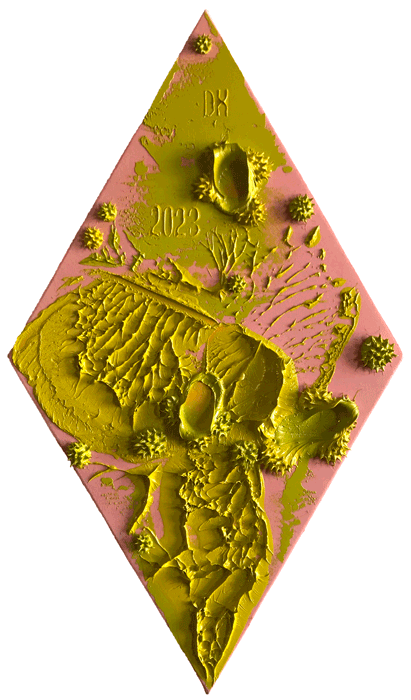
like I was shot with a diamond
2023
#621
18" x 12"
Oil on Canvas over Wood Panel
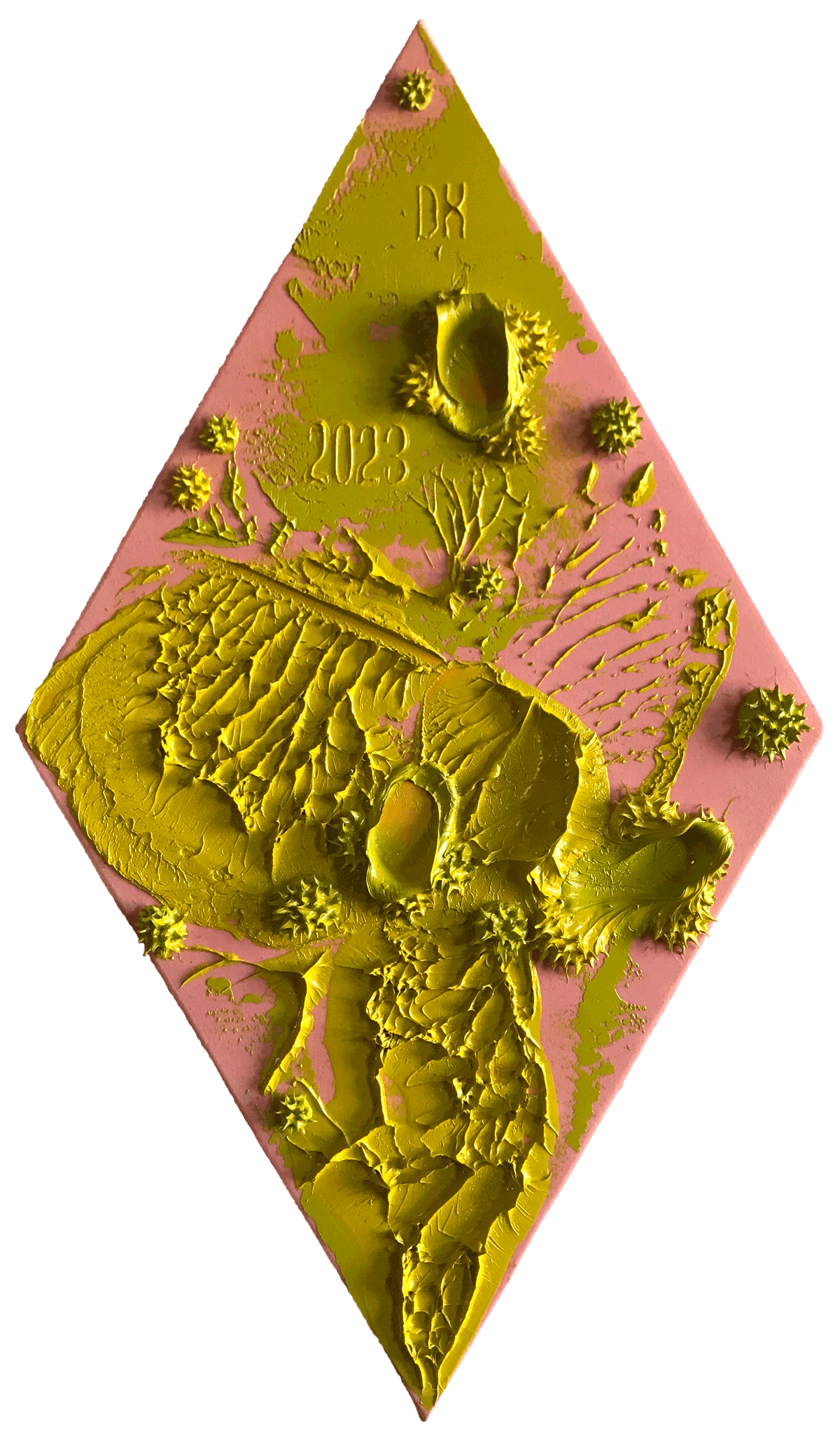
Posted by Dennis at
2:52 PM
|
Comments (0)
February 17, 2023
Sagrada Familia Gloria Façade
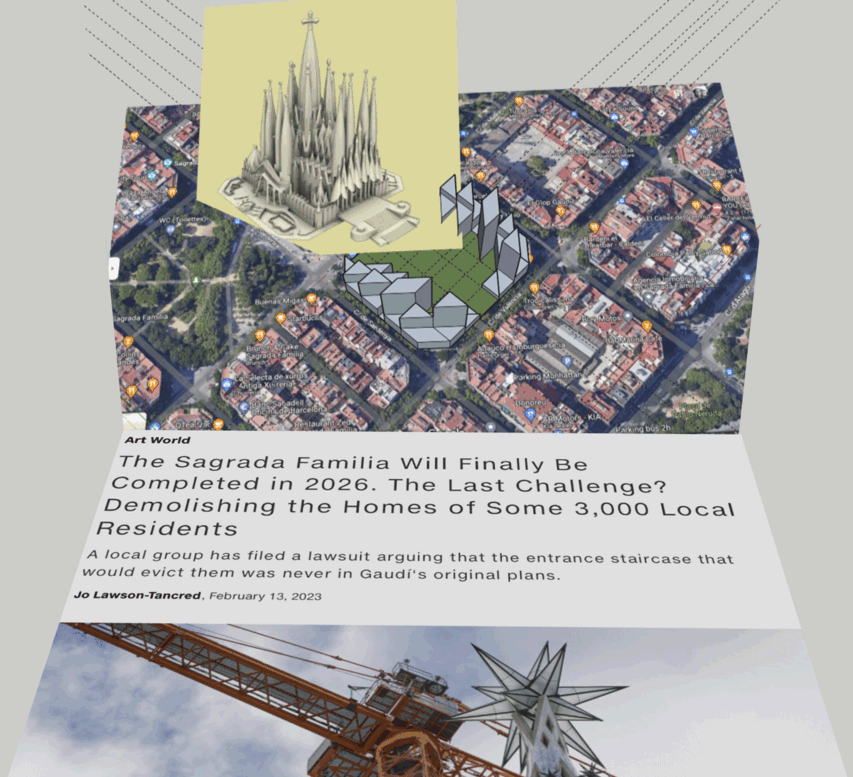
A quick mashup in Sketchup to illustrate what I regard as the only reasonable solution to the problem of the Sagrada Familia's Gloria entrance problem in Barcelona. I was prompted by
a recent ArtNet article:
The Sagrada Familia Will Finally Be Completed in 2026. The Last Challenge? Demolishing the Homes of Some 3,000 Local Residents
A local group has filed a lawsuit arguing that the entrance staircase that would evict them was never in Gaudí's original plans.
Leave it to an architect to design one of the Wonders of the World, depleting treasuries and imperiously elbowing neighbors along the way. Lots of pain... but what a wonder the Sagrada Familia is. All superlatives wither in the task of describing a place so incomparable. A UNESCO World Heritage Site, no less. So Gaudi designed a principal entrance that was meant to spill out onto an adjoining city block. And it's not any city block, but one of the Plan Cerdà, the magnificent and incomparable urban design solution of Barcelona's Eixample. Pitted against this august monument are simply three thousand inhabitants whose innocent mistake was to listen to the bureaucrats who had permitted their life there.
Illustrated rudely above is the obvious solution that would satisfy both parties, a renovation of the city block such that the residents and shop keepers could stay while giving the space for the church/basilica to breathe properly. It's just a massing scheme done in as few keystrokes as possible, don't take the form too seriously.
The wrinkle is an encroachment on the intentions of the Cerdà plan's building height and density limitations. To rebuild in a way that cleared out space while rehousing the existing inhabitants, it would have to be fueled by an additional amount of real estate that could pay for it. This means tower blocks, tall enough to do the job in additional occupancy but smaller than the Sagrada Familia itself. If the towers could form a kind of amphitheater framing the space and step back from the street wall, better. The apartments with the view could pay for the whole thing... maybe.
Well, let's see what will happen. As it is, someone in this story will have to break. It would be terrible for the city to say "sucks to be you" to the locals who had invested their lives there. A compromise where everyone wins is tough, but it's worth the try.
Postscript (March 18, 2023):
Artnet's Jo Lawson-Tancred followed up with an update: We Spoke to the 'Anguished' Barcelona Residents Fighting to Prevent the Completion of Gaudí's Famed Sagrada Familia
I'm grateful that JLT / Artnet is maintaining attention on this topic. The drama here drives deep into civilization, agents encroaching onto each other's space for time immemorial. Are we a rational enough species, peace loving enough to find mutually acceptable solutions?
Hinted in the headline's subheading and delivered in the final paragraphs: there exists an alternative plan authored by the residents (Association of Neighbors), and it's disappointing that the various actors in this dispute -especially the city of Barcelona- have deemed it necessary to conceal these plans. It's great to be informed about the nature of the political landscape that frames the dispute, very interesting.
There was a line in particular that stood out, though:
Desperate residents are clinging to hope that they can save their homes by arguing that the elaborate Glory facade was not even part of Gaudí's original plans. Their argument, which has formed the basis for a lawsuit filed against the city council, hinges on the fact that a fire destroyed the architect's original papers. Gaudí's intentions have been pieced together and inferred from surviving photos, preliminary sketches and the claims of his assistants, and the Glory facade's staircase is one of the more contentious elements of this reconstruction.,
(Emphasis, mine.)
What a great example of passive voice construction. A fire was the destructive instrument wielded by an anarchist militia during the Spanish Civil War. So, there's that.
Posted by Dennis at
2:13 PM
|
Comments (0)
February 16, 2023
love small ball again
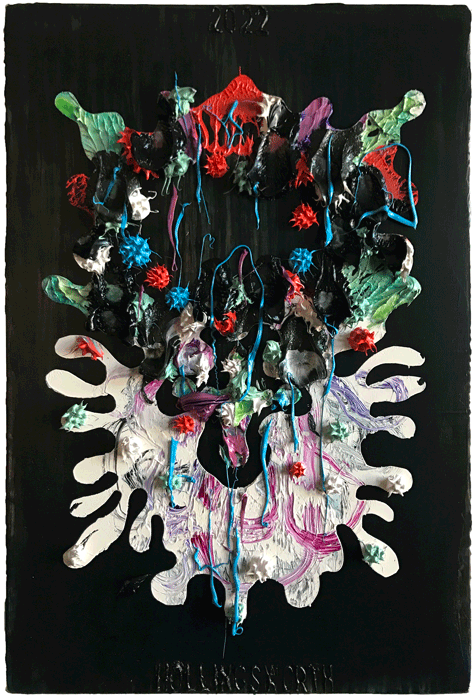
love small ball again
2022
#620
18" x 12"
Oil on Canvas over Wood Panel
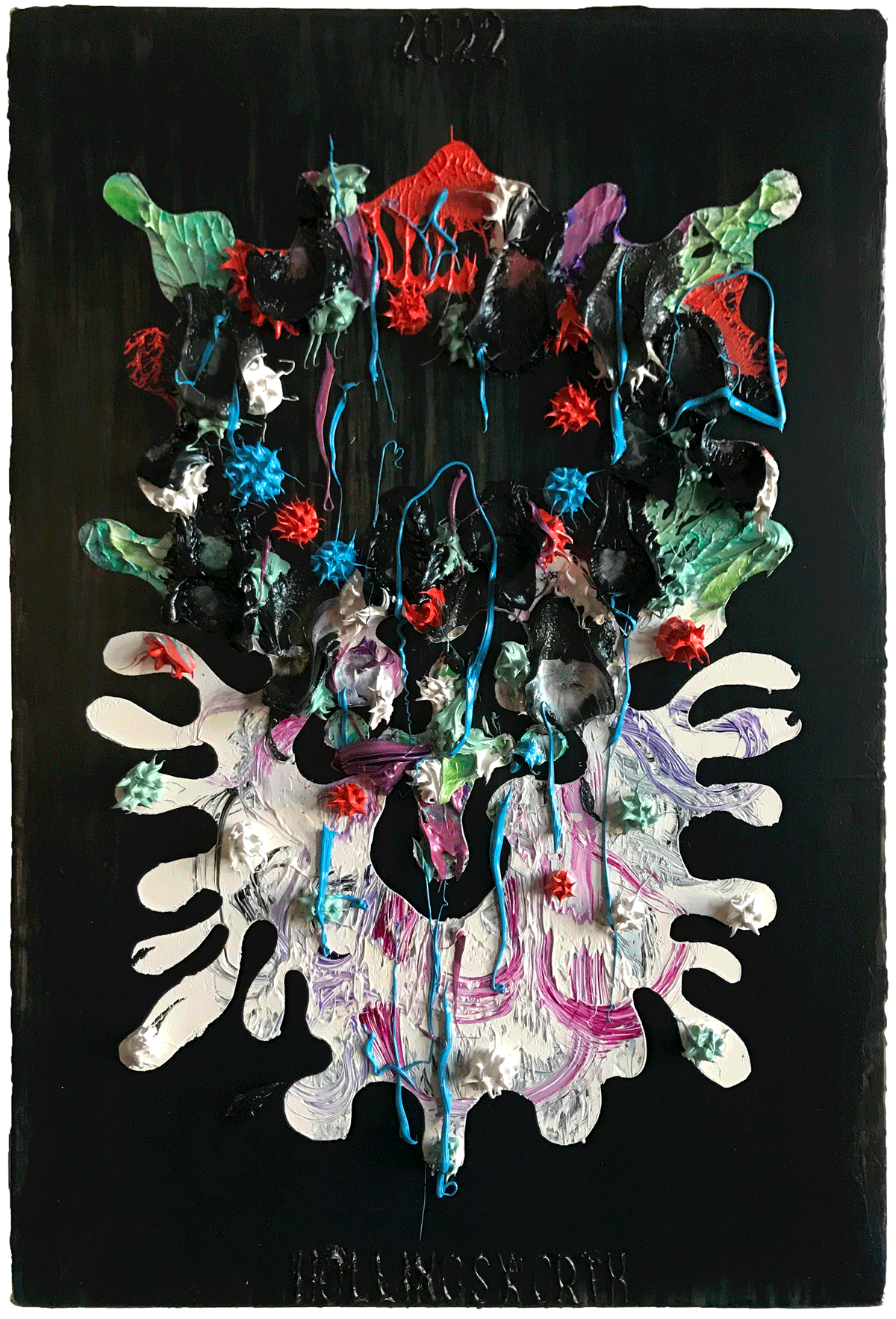
Posted by Dennis at
11:15 AM
|
Comments (0)
February 15, 2023
suddenly surrounded
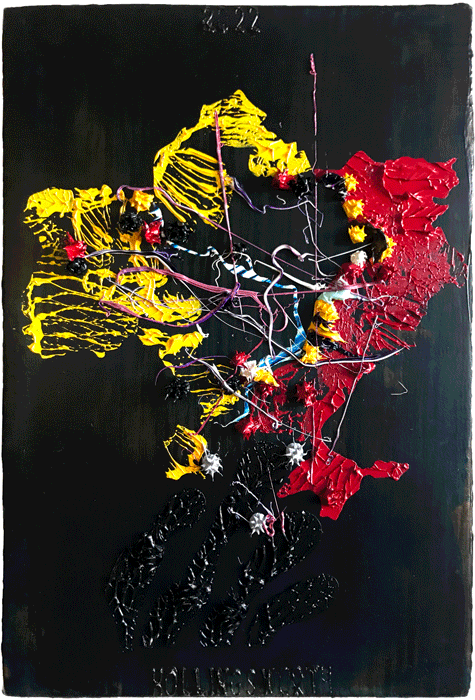
suddenly surrounded
2022
#619
18" x 12"
Oil on Canvas over Wood Panel
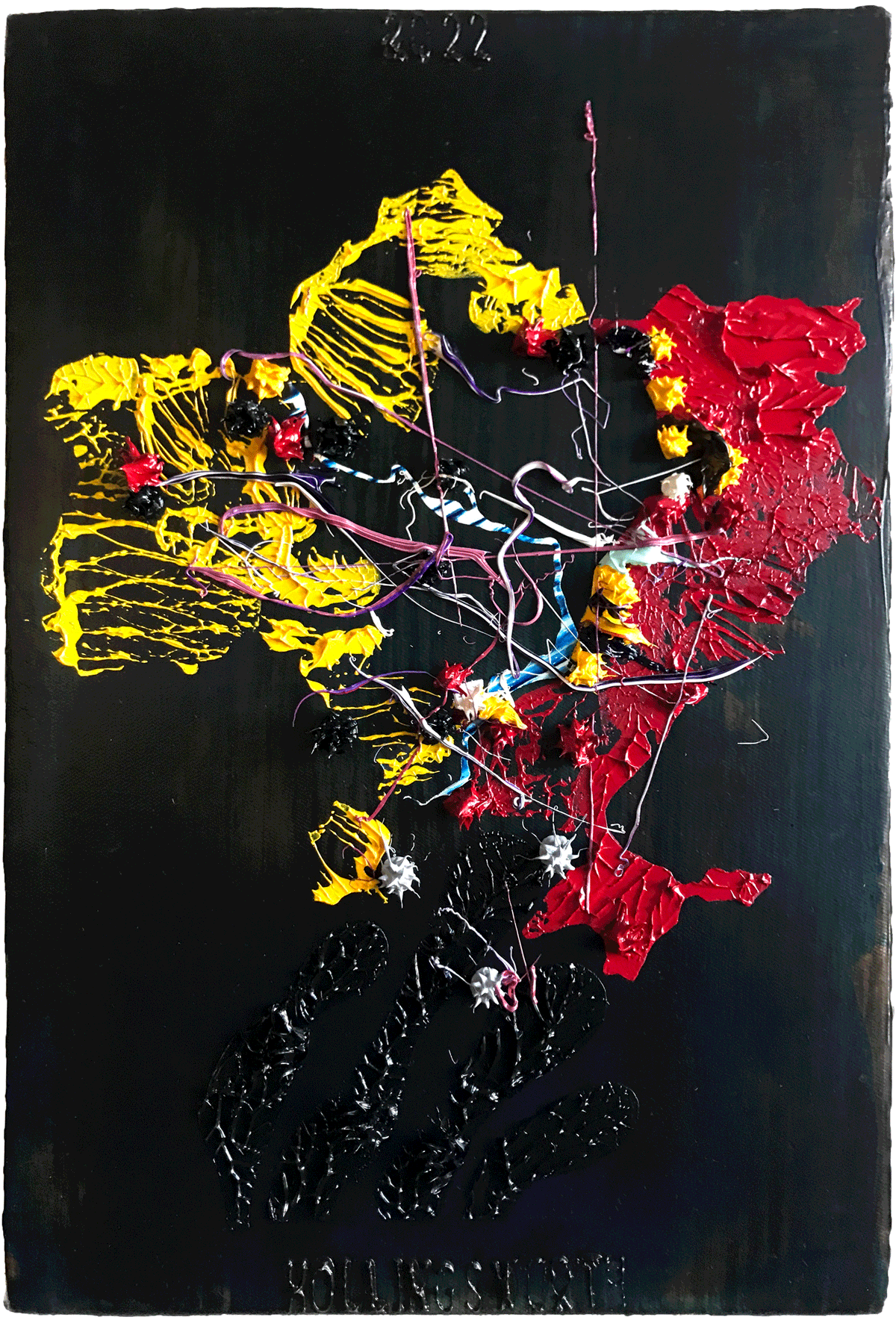
Posted by Dennis at
8:21 PM
|
Comments (0)
February 8, 2023
Diamond Double
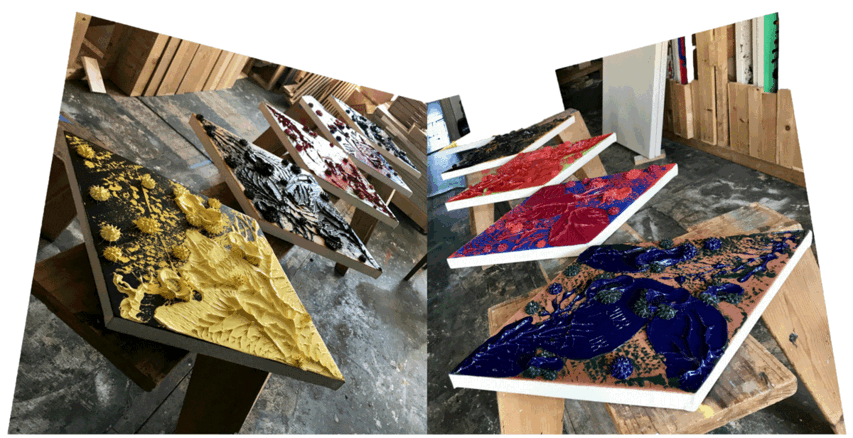
Posted by Dennis at
9:29 PM
|
Comments (0)
I Like Raking Light
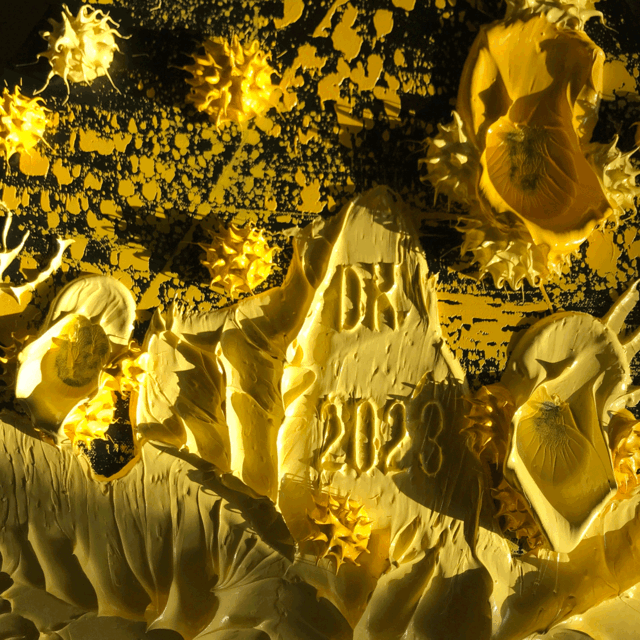
Posted by Dennis at
9:18 PM
|
Comments (0)
LESS: Minimalism in the 1960's
Panel discussion at Acquavella Gallery NYC about their exhibition LESS: Minimalism in the 1960's
I took notes.
NB: "Have we come to the end of [art] movements?"
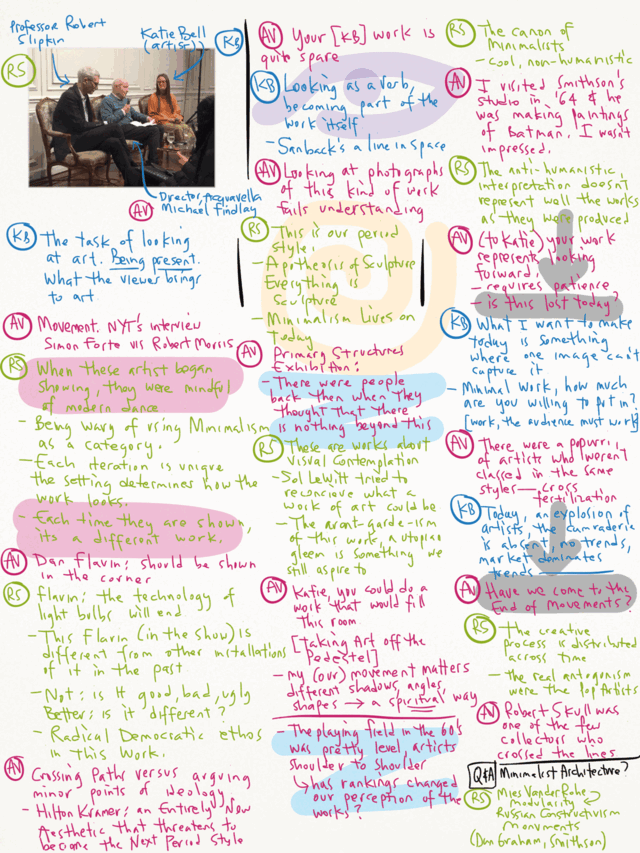
Posted by Dennis at
8:51 PM
|
Comments (0)

















